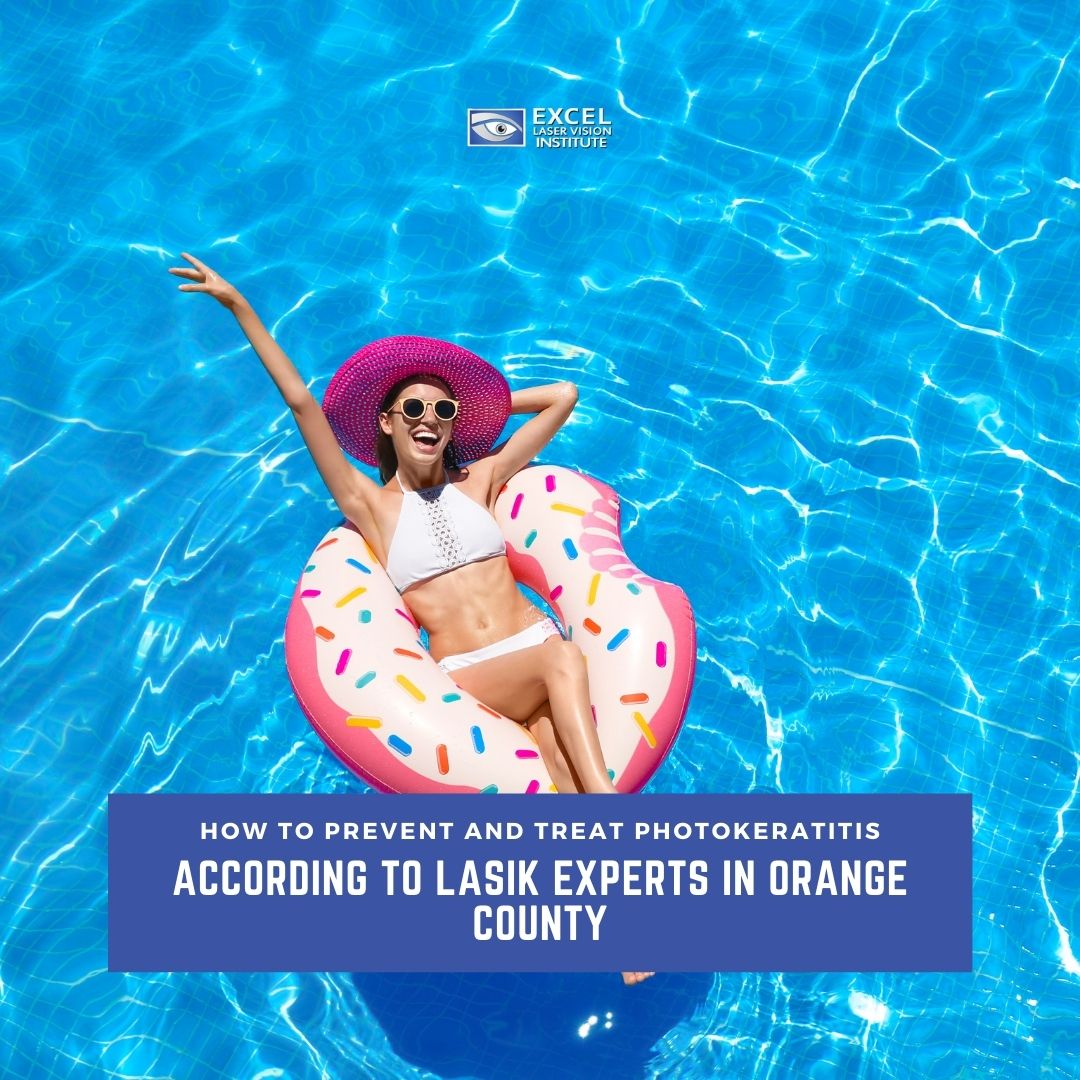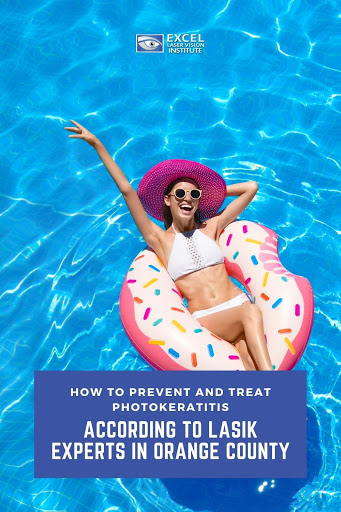
According to Doctor Moosa, one of the LASIK experts in Orange County, photokeratitis is like a sunburn for your eyes. While typically caused by UV exposure, this condition can also be produced with artificial light from tanning beds, halogen desk lamps, arc welding equipment, and laser lights. People can also develop photokeratitis from light reflected on snow and ice at high elevations. During photokeratitis, natural or artificial light damages the cornea and conjunctiva, which can cause vision problems and discomfort.

Even after receiving the best laser eye surgery in Orange County, people can still experience photokeratitis from sunlight exposure. That is why it is so important to protect your eyes with UV-blocking glasses. Here are some of the most common symptoms of photokeratitis to watch out for:
- Headaches
- Halos
- Blurred vision
- Swelling eyes
- Twitching eyes
- Light sensitivity
- Color changes
- Red, watery eyes
- Temporary vision loss
Symptoms of photokeratitis typically set in within six to twelve hours of exposure. However, there are some cases in which it takes as little as an hour. Symptoms can last for up to forty-eight hours. LASIK professionals in Orange County particularly those at Excel Laser Vision Institute say that the severity of the symptoms will depend on the length of exposure. However, even minor symptoms can increase a person’s chances of developing serious conditions like macular degeneration or cataracts in the future.
Whether you have had LASIK eye surgery or not, photokeratitis is a serious condition that must be prevented. The best way to protect your eyes from harmful UV rays is to purchase a pair of sunglasses that block 100% of UV rays. Sunglasses should be worn on any outdoor occasion since UV rays can still shine through even on a cloudy day. Sunlight can also reflect from surfaces such as water or snow, which is why it is so important to have the right protective lenses with you when spending time outside. Wide-brimmed hats and visors can also protect you from UV light.
Photokeratitis can also happen in the workplace. If you are exposed to UV radiation on the job, then it is imperative to wear goggles, face shields, or safety glasses to protect yourself. Do your research and discuss employee safety with your employer to see what equipment is already provided. Some people may consider getting UV absorbing contacts which block harmful light from reaching the eyes.
Treatment for photokeratitis depends on the severity of the condition. If you are experiencing any of the symptoms, then it is advisable to go inside and turn off any lights. Avoid rubbing your eyes or irritating them in any other way. Eyecare experts suggest using a cold compress to relieve any discomfort. Additionally, people may try artificial tears or ibuprofen to ease any painful symptoms. Keep track of your symptoms and note when they flare-up. If they do not subside in more than two days, then it may be necessary to visit an ophthalmologist. In most cases, using protective gear such as sunglasses and hats will help reduce any immediate symptoms. Speak to your eye doctor about photokeratitis to learn more.




